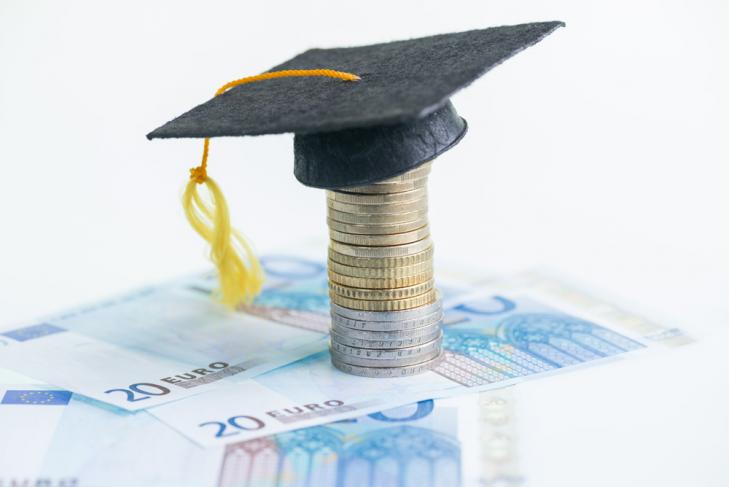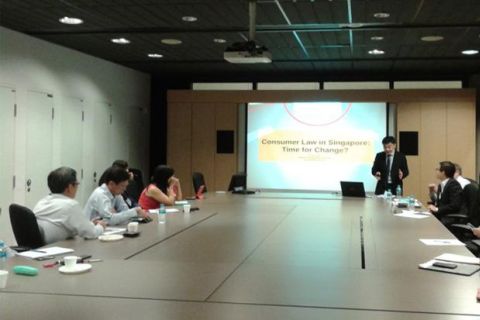
Researchers at the SMU School of Economics are studying how education and trade form two basic pillars of a robust economy.

By Yamini Chinnuswamy
SMU Office of Research – Parents are deeply interested in what their children will learn when they enter the school gates and how it will shape their future career, but few would think that the exercises they find on the whiteboard were influenced by the country’s trade policy. The same parents would more likely link trade policy with the price and quality of life essentials such as groceries and medicine. Yet some are starting to question the merits of free trade as they experience slower or more precarious improvements in their lives in a more competitive global economy. Governments too are thinking hard about how best to marshall resources and prepare their workforce to compete with fast emerging economies in rapidly changing markets.
These questions make it more important than ever to gain a rigorous understanding of how international trade policy affects the building blocks of the economy, such as education and industry. Researchers from the Singapore Management University (SMU) School of Economics (SoE) are making great strides in this quest through research in econometrics, international trade, macro and microeconomics. As a result of their research contributions, SoE emerged as one of Asia’s top schools in Tilburg University’s ‘Top 100 of Economics Schools Research Ranking’ in 2013.
Education and trade – a two way street?
Education systems are under an ever brighter spotlight as countries wonder how to equip their new generations for a world where knowledge and innovation are the important competitive advantage. Countries with contrasting education systems, such as Japan, Singapore and the US, are looking at each other for clues. Yet clues may also be found by looking at how existing education systems have been shaped by a country's own trade pattern and intensity.
SoE Associate Professor Chang Pao-Li, along with fellow SoE colleague Associate Professor Huang Fali, studies how a country’s education system is linked to its industrial and trade structures.
In particular, Professor Chang investigates how curriculum centralisation affects the talent available to different industries. She observes that centralised education systems are prevalent in East Asian countries such as Japan and Singapore. They often have a centralised curriculum council that sets and enforces a uniform curriculum via textbooks, instructional guides or national standardised tests. In contrast, countries such as the United States have more decentralised systems, without standardised curriculums or performance targets.
The free-spirited approach has helped the US build a diverse talent base for its creative industries whose needs are neglected by traditional school environments. Centralised education systems, on the other hand, are better known for consistently producing a homogeneous and well-trained workforce, which is advantageous for sophisticated manufacturing or services.
Professor Chang has found clear empirical evidence supporting this proposition through her research, drawing on the dataset of the Trends in International Mathematics and Science Study (TIMSS). This research revealed that in OECD countries a more centralised curriculum structure is associated with a lower skill diversity (and a higher mean ability in specific areas). This relationship was statistically significant and consistent across different years of study. “Our research findings are useful for policy makers thinking about the relationship between the education system and its desired workforce composition,” she shares.
In the same vein, Professor Chang suggests that education designers go beyond focusing on the micro perspective of school performance, and consider their country’s global strategic position. This will differ according to a country’s niche in the global economy, she notes, and so there will be no universally optimal education style. In fact, the existing education style may be further entrenched as a country participates more in trade, as her research shows. For example, Japan and the United States typify the most centralised and decentralised education systems practiced around the world, in spite of repeated calls and attempts to change them.
Better allocation of resources across industries
Like Professor Chang, SoE Assistant Professor Hsu Wen-Tai also studies international trade theory and policy. In particular, his research focuses on how global competition affects resource allocation among different producers and industries.
“The benefits and costs of trade have always been a hot topic but the gains from trade in terms of improving resource allocation are often overlooked,” says Professor Hsu, who examined this benefit in a recent publication. While it is well known that monopolies make poor use of resources compared to competitive markets, he found that what may be even worse for the economy is uneven distribution in market power across firms and industries.
Professor Hsu offers the economic rationale for this: “People will be unhappy if goods are either produced in very low quantities at extremely high prices, or in massive quantities at very low prices. All things being equal, consumers would be better off if production resources are distributed more evenly. From a trade perspective, a country should seek to open up sectors that are highly protected rather than those that are already highly competitive.”
Citing China and its state-owned enterprises as an example, he notes that certain industries such as basic materials and pharmaceuticals have been liberalised, whereas industries such as finance and oil are still subject to state monopoly. Professor Hsu is currently building on his theoretical model of resource allocation using empirical data from China’s economic census in 1995 and 2004, which saw a seismic shift occurring in 2001 when China liberalised its trade policies upon entry to the World Trade Organisation.
Preliminary results from Professor Hsu’s study suggest that foreign competition resulting from free trade has had two main effects: first, that it depresses the mark up and monopoly power of each domestic firm; second, that it evens out the dispersion of market power between these firms. “Before any foreign competition, some industries or firms might have too much market power. We’ve found, however, that economic gains in trade in China due to foreign competition comprise up to one third of the total,” Professor Hsu adds.
Building a strong position in the global economy
With globalisation, international trade will only rise in importance for Asia. The work of SoE researchers such as Professor Hsu’s goes a long way in helping us understand how economies should adjust to find their strongest position in the global economy.
Perhaps the most important player in this, yet most complex in its relationship with trade, is the education system. Even as global changes demand new talent and new education systems to produce it, Professor Chang’s research shows that participation in international trade may lock countries into their pre-existing styles of education systems. And for a country to leap over from one trade structure, such as the sophisticated manufacturing industries found in Japan, to another extreme, such as that of the research and development (R&D) and creative industries found in the US, requires conscientious policy shifts trading off long-term gains and short-run losses, she says.
While there is no doubt that international trade and education are building blocks of a robust economy, it is also necessary to consider a multitude of factors such as urban sustainability and healthcare systems. The researchers in SoE are looking to tackle these issues from a multidisciplinary perspective. “I believe we have a lot to contribute through our research, especially when the environment here at SoE is intellectually stimulating. Furthermore, the school is highly supportive and gives us great freedom in undertaking research,” says Professor Hsu.
See More News
Want to see more of SMU Research?
Sign up for Research@SMU e-newslettter to know more about our research and research-related events!
If you would like to remove yourself from all our mailing list, please visit https://eservices.smu.edu.sg/internet/DNC/Default.aspx

